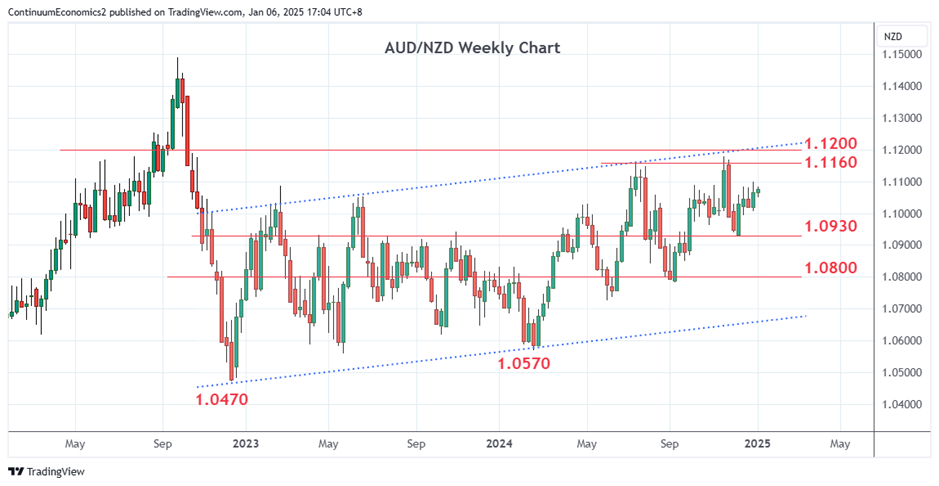The Aussie Chapter 5.2: Another tale of two cities
In Chapter 5.2, we will continue to look into the dynamic between the Aussie and Kiwi after central bank policy part ways and what to expect when RBA tilts towards easing.
The Aussie and Kiwi has been referred as the Antipodeans by market participants and seen mostly moving in a similar fashion against the USD, given their proximity. While the development in their corresponding economy is different, central bank interest rate remains to be the biggest factor in determining the FX movement, apart from the physical need. Both central bank tend to move closely but occasionally part ways, which theoretically should lead to a one side direction on yield differential. In Chapter 5.2, we will look into the latest difference between RBA and RBNZ and their impact towards the pair, AUD/NZD. For the first tale of two city, kindly visit chapter 5.

On the chart, AUD/NZD has been ranging below the 1.1000 level through most of 2024 before finally closing above that on the monthly chart in December. This suggest room for stronger gains into Q1/Q2 to retest resistance at 1.1160 and 1.1200 level. The latter is also channel top from 2022 low and this area is expected to cap and see prices settling back in consolidation to the 1.1000 and 1.0930 support. Only below 1.0930 support will see room for deeper pullback to 1.0800.
And from the central bank perspective, RBA has been holding rates at 4.35% since November 2023 and indicated their easing step will only begin in mid 2025 but we are calling for an earlier cut in Q1 2025 as inflation cools faster than their forecast. On the other hand, the RBNZ ha begun cutting since August 2024 from 5.5% to 4.25% now and is expected to continue cutting to bring rates to neutral in 2025. The movement in AUD/NZD is rather muted at first as market participants are originally anticipating the RBA to cut earlier. Such expectations were pushed back by the RBA's undercutting of low CPI from government energy rebate.

Indeed, we see AUD/NZD rose by around three figures since the RBNZ's first cut but it seems more like a trend move rather than triggered by the interest rate changes. Historically, the RBNZ's interest rate has been slightly higher than RBA as they are a smaller economy. The AUD/NZD has been relatively steady for the past decade as there has not been any significant structural shift in both economy. Global economics crisis often affects both economy in a similar magnitude and does not see a significant shock to either one. Thus, AUD/NZD oscillate within a range instead of any one way movement.
Looking forward, there will be little surprise from the New Zealand side except transitory spike but Australia will likely revise their inflation forecast lower as headline CPI proved more cooling even after energy rebate ends. Such will see market participants anticipation of a cut earlier and could cut the legs off Aussie. However, uncertainty in our global outlook, especially unpredictable inflationary pressure from Trump's tariff, could potentially affect the current policy trajectory. It could see AUD/NZD rebounds from the upper band of the ascending channel with further downside if the inflation picture of NZ continue to flare up after the strong Q4 CPI.